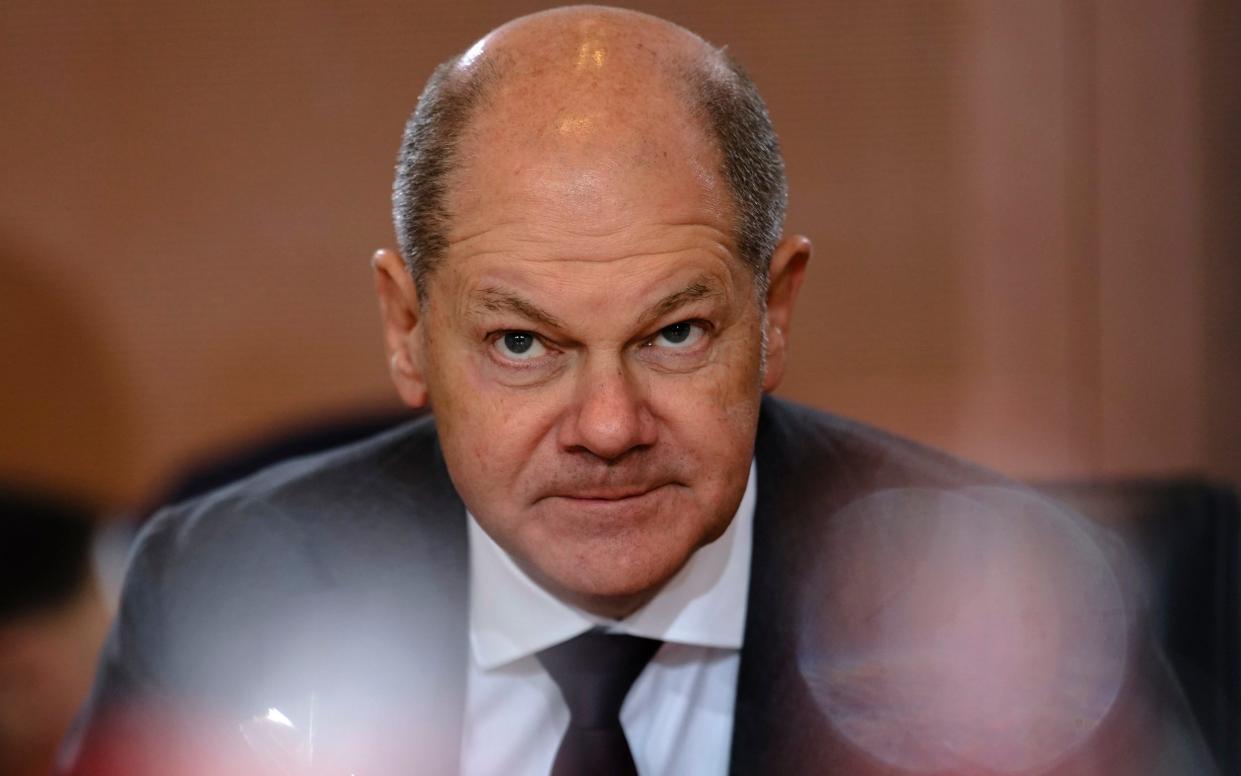The German economic model has been destroyed by its own hubris

- Oops!Something went wrong.Please try again later.
Industrial production is falling. The property market is in freefall. And the government can’t borrow to restructure it’s industrial model, nor to rebuild it’s crumbling infrastructure.
It might sound like the opening to yet another investigation into the woeful state of the British economy. In fact, it is a succinct summary of the once mighty German machine, still held up by centrists and ardent Remainers as the emblem of what a developed economy should look like. In reality, the German model is broken – and it is about to bring Europe down with it
We might think the news out of the UK is relentlessly downbeat, but we are positively booming compared with Germany. Almost every week brings more bad news. On Thursday, industrial production (which of course matters far more in Germany than most countries) unexpectedly fell for the fifth month in a row. In the third quarter, GDP fell by 0.1pc, having stagnated in the two quarters before that.
Property prices are falling at the fastest rate since records began, with values down by around 9pc so far this year and with cities such as Berlin and Hamburg hit particularly hard. Of the G7, it has had the slowest recovery from the pandemic, and according to the IMF is recording the worst performance of any major economy in 2023.
On top of all that, its government can’t even spend its way out of trouble. The frugal Germans have one of the lowest debt to GDP ratios in the developed world, but the constitutional court has vetoed tens of billions of “green spending”, viewing it as a breach of the legally mandated debt limits.
However you choose to look at it, an economy that, at the end of Angela Merkel’s long reign, was held up as a model of rational, consensual, expert-led government, is now clearly in deep trouble.
It is not hard to work out what has gone so badly wrong. There were three big drivers of Germany’s apparent success over the first two decades of the century but, one by one, they have all gone into reverse.
First, Germany carved out a role as the supplier of China’s industrial revolution, supplying the machine tools for its factories, the electronics for its engineers, and the cars, trucks and trains for its transport network. The trouble is, the tables have now turned.
China’s hyper competitive entrepreneurs have “learned” everything they need to know from their German partners.
They no longer need to buy anything from them. Even worse, they are about to start out-competing them in every industry that matters. Cheap, stylish Chinese electric vehicles are beginning to flood the European market, destroying Germany’s auto industry. But that will just be the start. High end energy and medical equipment will be next. From an opportunity, China is now a rival, and a brutally efficient one.
Next, the cheap energy has come to an end. The Russian gas that flowed through the giant east-west pipelines of the Merkel era was crucial to Germany’s competitiveness. It allowed the country to dominate industries including complex chemicals, with plants like the huge BASF factory in Ludwigshafen consuming as much gas as the whole of Switzerland.
With that cut off, costs have soared, hollowing out the industrial base. Even worse, Germany complacently closed down its nuclear industry, and refuses to contemplate fracking (even though the Ruhr has as much shale gas as anywhere in Texas or Canada).
A hyper competitive Poland right on its border is now building the nuclear generators it needs to fuel factories that are gaining ground on German rivals.
Finally, the euro is no longer the advantage it once was. When the single currency was launched in 1999, the Deutschmark locked in an artificially low exchange rate. Coupled with wage restraint, that allowed German factories to effortlessly undercut rivals in France, Italy and Spain.
Much of the rest of the continent was ruthlessly deindustrialised, but Germany boomed. It was great while it lasted, at least so long as you were a worker in Stuttgart instead of Seville. After two decades of painful adjustment, however, that process has come to an end. Indeed, countries such as Greece that suffered mightily from German competition are now out-performing it.
None of those trends can be reversed easily. The debt brake stops the government from spending, and there is no sign that the hapless coalition led by chancellor Scholz has any idea how to create a leaner, digital, entrepreneurial economy.
Instead, the Greens prevent it from working out how to lower energy costs, and the trade union dominated Social Democrats prevent it from winding down traditional heavy industries. The result? Years of stagnation lie ahead.
And a weak Germany means a weak Europe. The stagnation of its major economy poses two major problems for the whole of the bloc. The major driver of growth – which was pretty feeble to begin with – is stalling.
Sure, Greece and Portugal are doing a lot better, but they will never be the locomotive for the whole continent. Without the German engine, the whole zone is condemned to another decade of zero growth.
What’s more, Germany was the paymaster for the entire European project. France doesn’t expect to pay any bills, and Italy can’t afford to.
The result? Plans for huge spending on “green industries” will come to nothing. The EU will descend into undignified squabbling. The continent was propelled by a healthy German economy. Without it, the outlook will soon turn very bleak.

